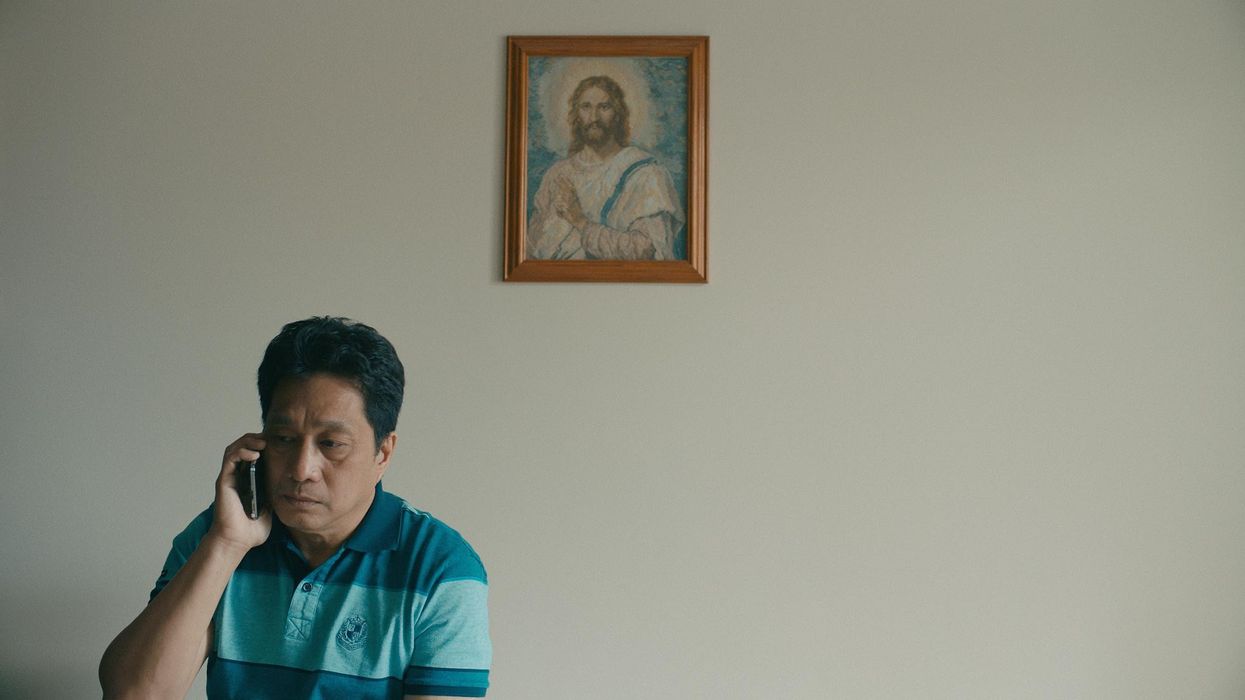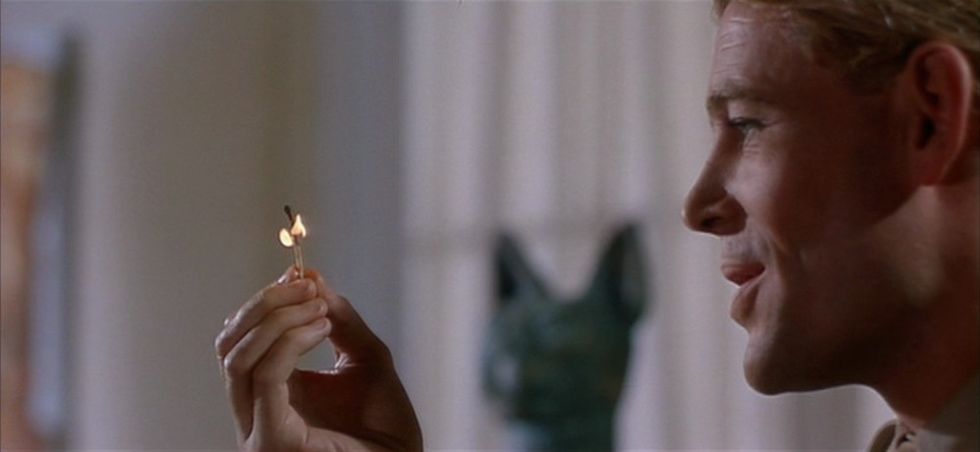What You Need to Become a DP on Indie Features
What does it take? A nice camera? A truck full of SkyPanels? Three cinematographers at SXSW share what you need (and what you don’t) for the job.

Lauren Guiteras, Diego Guijarro, Farhad Dehlvi are very different DPs with contrasting sensibilities. What do they have in common? They all shot feature films playing at the 2021 SXSW Film Festival.
How did they got the job, pull off their films, and what is the most important advice they have for you?
In a conversation with ZEISS moderator Snehal Patel, the three talented cinematographers explain it. No Film School was there, and now we bring you their most important takeaways.
First, how did they get the job?
For Diego Guijarro, Islands was his first narrative feature as DP—and he almost didn’t shoot it.
“This is actually my first feature film ever,” said Guijarro. “I came in last minute. The DP who was supposed to shoot it couldn’t do it anymore. I happened to know the DP, he called me, and my agency sent me the script.”
Guijarro had volunteered on a short film with director Martin Edralin prior, and now, it paid off. For Guijarro, the opportunity was super exciting. And incredibly challenging! Islands, directed by Edralin, was part of the Canadian Telefilm MicroBudget program.
“Basically we had a really small budget—$120K CAD for 22 days of shooting!” he exclaimed.
In addition, it was a challenging story. “It’s a portrait story, mostly in another language. It’s really character-based, all in one house. All the actor had never been in from of the camera. It could have been worse than it came out!”
For Ma Belle, Ma Beauty cinematographer Lauren Guiteras had long ago met the director, Marian Hill, in college.
“She pulled focus on the second short film I ever shot,” said Guiteras. But since college, Guiteras had been based in Los Angeles with Hill in New Orleans. Luckily, they stayed in touch.
“We had this bond from college. We both had similar struggles with the 'boys club' of film school and this sense of isolation, which was followed by the realization that we weren’t alone in that made us stay in touch. When [Marian Hill] sent me the script, i was blown away. I read 90 pages in an hour, and it was easy to get excited about. It was a magical experience to shoot. She was intentional about bringing people together from her life and the world to come together to make it.”
Women is Losers cinematographer Farhad Dehlvi had been along for the ride with director Lisette Feliciano ever since they made the short film version of the feature.
“I was introduced to Lisette by some friends, and we did a short film version of this together five years ago,” said Dehlvi. “[For the film], we lived together in her childhood home, we soaked up the artifacts that a life leaves behind. She always wanted to translate it into a feature. We had extended prep for two years while working other jobs and she was writing. When the film finally got greenlit, we had only two weeks to prepare, so that long prep time helped a lot!”
What did they shoot their films on and why?
While Farhad Dehlvi did say he is format agnostic, he knows the ALEXA censor the best, and Women is Losers was shot on the ALEXA Mini to keep the camera package small and nimble. The small and nimble was in part due to the fact that they had 20 days to shoot on location in small spaces in San Francisco.
“It was a lot of by the seat of our pants,” Dehlvi said. “We stayed away from handheld. We lived on a gimbal for a lot of the movie. Where we didn’t have time to set down dolly tracks, but used gimbal to create stillness, while being able to adapt to performance but still have a poetry to the visuals.”
Another choice for the look of the film? Atlas Anamorphic lenses.
“The biggest factor for us visually was to portray Celina as a hero, someone who is taking control of her own destiny. As a person of color, an immigrant, a woman, Celina’s identity was tied to others in her life, but she wants to claim her identity for herself. We were doing a lens test in New York. The rental guy put one anamorphic on the bench. When she looked through it, Lisette was like 'Wow, she is a hero.' Not to say we couldn’t have done that spherically, but the portraiture was to give her sense in the frame that grounded her as a hero. Our prep together unlocked something that became the cornerstone of our visual language.”
Last but not least, lights?
“Light mats were invaluable because we were in small San Francisco locations,” said Dehlvi. “I used Leko ellipsoidal spot reflectors. I guess its old fashioned, if I have the power, I do tungsten. It’s the most beautiful light, other than daylight, there is.”
Guiteras shot Ma Belle, Ma Beauty on the ARRI AMIRA, with a great package from Paris Panavision for Panavision Zeiss Ultra Speeds. “They were right because they aren’t crazy, wacky lenses. In this film, the cinematography is not loud.”
But the most crucial part of the film’s look came partly from the budgetary constraints of sleeping in the location they were shooting.
“I had a week of prep in the house we shot the movie in. It was great to wake up and watch the sun rise every day in the rooms we would be shooting in, and seeing who the light changed through the day. It’s hard living where you’re going to shoot when you actually have to shoot, but it provided an amazing opportunity how to dance with the sun. I had a three-person crew and 13 days to shoot this movie. Before I shot the film, i was talking to Charlie Lieberman. I was insecure because of not having a lot of gear, thinking cinematography is about strictly technical expertise, knowing how to work with big tools. He told me, ‘Knowing when the right time of day is, and how to get there, is still cinematography.’ That was how daylight played the role in this film.”
Guijarro shot Islands on the ALEXA Mini LF with Cooke lenses, because he liked the sharp look of the ultra primes.
“My biggest challenge was myself. You get your first feature, and it’s something you’ve been dreaming about for a long time, and you start expecting what you want. You have to deal with limits you are presented. That was my biggest challenge. It taught me. I had ideas of what cinematography was, and this taught me what cinematography actually is."
And his preferred lighting?
“If I had to pick something, hard lighting. You can always soften it or shape it. Light mats, I think they are some of the best creations. If I had to choose what to bring, it would be hard and big, and start cutting down. And lately, mirror boxes for anything.”
All three cinematographers have lensed excellent films. What is their parting advice for you?
Guiteras: “Spend as much time with the director as possible. Your technical plan, your ideas about color and composition, that all stems your relationship with the director, so put quality time into that.”
Guijarro: “Learn to be happy with yourself when you’re not working. Experience and see other things, not just in film. Hike, read, be happy with yourself.”
Dehlvi: “If you’re starting out, resist the temptation to judge. Whether it’s a script or a person, or yourself; sit with it and study it for a minute. We want to encapsulate everything, but give it the time and the respect it deserves, and then decide what you think of it. Leverage your honesty to tell the story. The stories that move me the most are the ones I feel are the most sincere and earnest, when I feel the storyteller is putting their heart on their sleeve and not staying at arm's length.”
Thank you Lauren, Diego, and Farhad!
For more, read our ongoing coverage of the 2021 SXSW Festival.






















